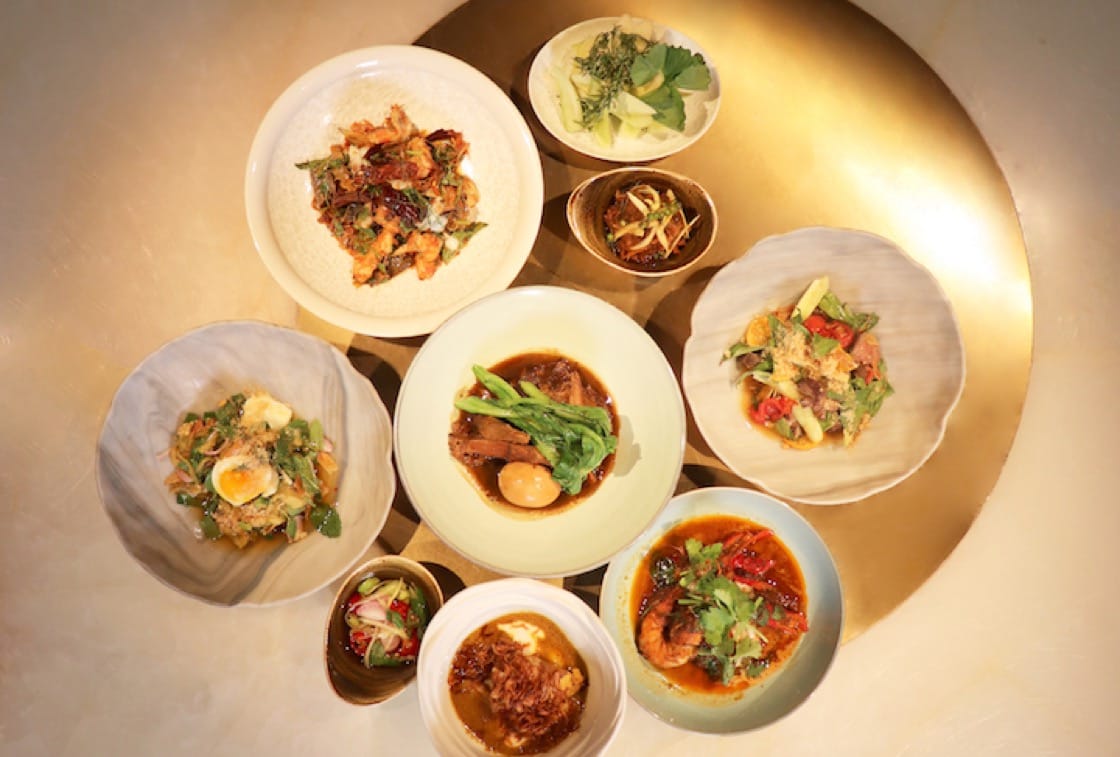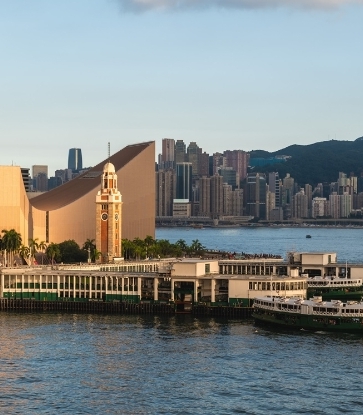Last April, Thompson parted ways from Nahm, an acclaimed Thai fine-dining restaurant that he co-founded with COMO Hotels and Resorts in London in 2001. A decade later, the restaurant, which is famed for breathing new life into historic Thai recipes, relocated to the COMO Metropolitan Hotel in Bangkok, which later clinched a Michelin star in 2017. After Nahm, Thompson, who also runs casual Thai restaurant chain Long Chim in Australia (its original Singapore outpost shuttered recently in Marina Bay Sands), he started Thai restaurant Aaharn in Hong Kong late last year.
Thomspon adds that he was lured to open a restaurant in Hong Kong — his first in the territory — in a 95-year-old armoury building in Tai Kwun in Central. The building also houses a bar, which is also part of Thompson’s Aylmer Aaharn group. He says: “It was the building that told me what to do. It has the right upmarket feel.”

A crowd favourite is the steamed red curry of lobster with young coconut and Thai basil. He ups the luxe factor of the massaman-style curry, which he compares to a Mexican mole, by adding in the crustacean. Other dishes include deep-fried perch fillet with tamarind, chilli and holy basil, and stir-fried Siamese watercress with fermented beancurd. Over the past three months, he has been working with head chef Boonyapat Pariyasakul (second from right in main picture), who has worked in fine-dining restaurants in Australia and Thailand, and cooked for diplomatic events.
He says: “I still yearn to do something in Bangkok as it is still my home. I love and miss the city, despite its bloody hot weather.”
After spending so much time with the restaurant, it is difficult not to leave with some regret. I have a good working relationship with the COMO Group but this was an opportunity to expand the business by running multiple food and beverage concepts in a building.
2. How different is Aaharn from what you have done at Nahm?
Aaharn is a more streamlined version of what I did at Nahm. Back at Nahm, I had a larger kitchen and more cooks, and we could have about 45 dishes on the menu. However, I need to be practical about having a smaller kitchen in Hong Kong. Then menu is more focused on about 20 dishes, but they still stay true to the traditional yet hybridised cuisine. I used to do a carte blanche menu but I am now more judicious in deciding what to put on the menu, and how to tweak the dishes to suit the palate of Hong Kong diners. Whilst they are adventurous, they are sensitive to salt.

3. Share with us the inspirations behind the food at Aaharn?
I have dug into my archives of dishes and re-examine them. Besides these old recipes, I am also inspired by the produce that I get from the city that I am based in. For now, I am checking out the chicken supplier that is also used by Matt Abergel of Yardbird.
4. Having helmed Thai restaurants in Asia for more than three decades and counting, What gets you excited about Thai food?
The rise of young Thai chefs working on their interpretation of the cuisine is exciting. While I take an orthodox approach, I think it is about staying faithful to your direction and style of cooking. Some exciting names in the Thai food scene include 80/20, a modern Thai restaurant in Bangkok.
5. You have played a big part in promoting the heritage of Thai cuisine over the past two decades, what do you hope to do with Thai cuisine in the next chapter of your career?
I would like to focus more on the provenance of ingredients in traditional Thai recipes that have not seen the night of day. To do that, I need to expand my network of organic and sustainable farmers. There are still many obscure herbs and ingredients from Bangkok to discover. I am using some of them at Aaharn, such as wild mushrooms, banana blossom and water bamboo.






















